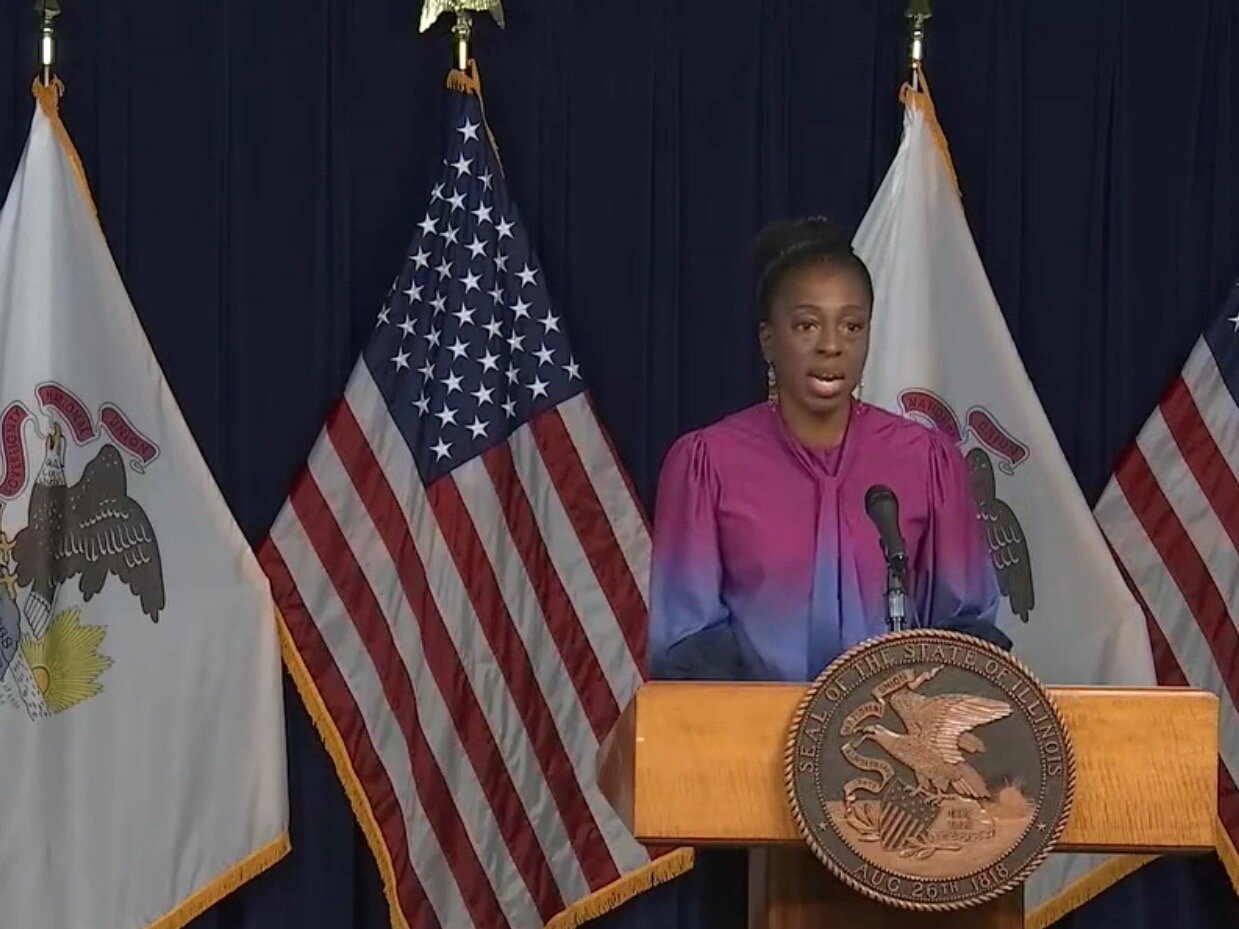Guv guards against 'post-Thanksgiving surge'
Pritzker says Tier 3 COVID mitigations to remain in effect at least to mid-December
Backed by a sign-language interpreter, Gov. Pritzker warns against a “post-Thanksgiving surge” in the coronavirus pandemic during his daily COVID-19 briefing Monday. (Twitter)
By Ted Cox
Guarding against a “post-Thanksgiving surge” in COVID-19 cases, Gov. Pritzker said Monday that the current mitigation restrictions to slow the spread of the coronavirus will remain in place at least into mid-December as state health officials gauge whether the holiday produces a new outbreak.
In his daily coronavirus briefing at the Thompson Center in Chicago, Pritzker cited the “bleak outlook and a warning” recently issued by Dr. Anthony Fauci concerning a possible “surge upon a surge” after many people gathered outside their families last week. Pritzker also quoted Dr. Deborah Birx, like Fauci a member of the White House Coronavirus Task Force, in warning of a “post-Thanksgiving surge.”
The number of newly confirmed COVID-19 cases dropped below 10,000 on a daily basis through the long holiday weekend, albeit with reduced testing. Public Health Director Dr. Ngozi Ezike reported 6,190 new cases Monday, to bring the state total to 726,304, while 85 new deaths blamed on the coronavirus took the statewide toll to 12,278. The seven-day testing positivity rate stood at 10.2 percent.
Calling that a “suggestive trend,” Ezike said, “I’m hoping and praying that it’s a positive trend,” to be sustained over the next couple of weeks. But she advised anyone who celebrated the holiday with others outside their household to get tested later this week.
“We want to see those numbers continue to drop,” Pritzker said. “What we’re trying to do here is get the infection rate down.”
With 5,849 patients in the hospital with the coronavirus, 1,217 under intensive care and 715 on ventilators, Pritzker pointed out that was 23 percent higher than at the peak of the spring outbreak, adding that some rural hospitals had reported approaching staffing shortfalls. Ezike pointed out there is “significant mortality” for those on ventilators, with the death rate for those patients rising as high as 25 or 50 percent.
“If we’re not especially careful right now,” Pritzker cautioned, “the surge will overwhelm our state’s health-care system.”
“It’s going to take quite a long time, and people need to understand that.”
Dr. Ngozi Ezike on the statewide COVID-19 vaccination process (Twitter)
As such, the governor added, the Tier 3 restrictions under the plan to Restore Illinois, banning indoor service in restaurants and bars, would remain in effect regardless of which way those numbers move until at least mid-December, as the incubation period for the virus is typically a week or two.
In the face of the McHenry County state’s attorney saying he would not enforce that ban, Pritzker pointed out the State Police force has only 1,900 troopers available, and they can’t possibly enforce the ban statewide. “We’re asking everybody across the state to do what’s right in following the law,” he added.
The “goal,” according to Pritzker, is to avoid imposing another stay-at-home order, as in the spring. “It’s not something right now that we think we’re going to have to do,” he said.
Pritzker said it was impossible to predict what measures might be necessary over the holiday season later in December without seeing where the infection rates go over the next two weeks.
The governor and Ezike said they expected some vaccines to become available in the days following the Pfrizer drug company’s hearing with the U.S. Food and Drug Administration set for Dec. 10, and they would first be distributed to front-line health and public-safety officials and then to populations at high risk, such as the aged and those with co-morbidities in the form of chronic diseases that can complicate COVID-19.
Ezike said more details would be provided later as more is known about the availability of various vaccines being considered to treat the pandemic. “We know that we want an equitable distribution,” she said. “No part of the state will be left out.” But, cautioning about the sheer logistics of inoculating a state with almost 13 million residents, she added, “It’s going to take quite a long time, and people need to understand that.”
In the meantime, Ezike said, “We need to take a layered approach,” using all preventive measures available to slow the spread of COVID-19: wearing a mask, washing hands, watching social distancing, and just staying home whenever possible. “If we stay the course yet a while longer,” she added, “we will end this pandemic soon.”


